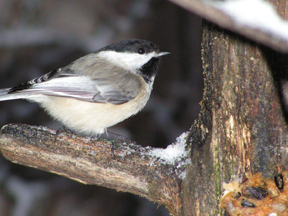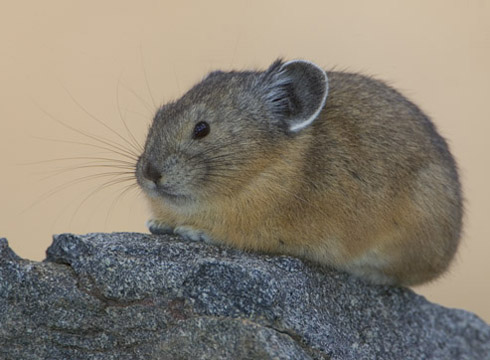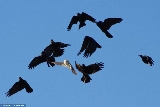
Copyright © 2008 & Courtesy: Jim Cane
Bridgerland Audubon Society
This is Linda Kervin for Bridgerland Audubon Society.
Now, in the waning days of winter, you can see Nature’s winter flea circus perform. Look for warm snow surfaces that are peppered by tiny black flecks that resemble a parenthesis on your 1040 form. Bend down to regard these flecks carefully, or scoop some up. If they move, then you are likely eye to eye with snow fleas.
Fear not, for they aren’t really fleas at all. They aren’t even insects! Snowfleas belong to the order Collembola, the springtails, closest relatives to the insects. Springtails are so named for a fork-shaped appendage, the furcula, folded beneath the abdomen. The animal can snap its furcula open like a barrette clasp, catapulting the wee creature several inches forward through the air.
Springtails are rarely noticed, but it’s worth seeing their miniscule acrobatics. It helps to have something white against which to view them. The white warmed surface of the late-winter snowpack provides one opportunity. Or you can often see springtails by placing a white card on the needle duff of a conifer forest floor, where springtails help decompose fallen needles.
Atop the snow, snowfleas apparently graze for algae and fungal spores, but really, how would anyone know? In turn, are there wee predators from which snowfleas must, well, “flee” in this chilly habitat?
Snowfleas aren’t social, but they sure can be numerous. Last March, the manager of Bridgerland Audubon’s Barrens Sanctuary estimated a population of some 8 billion snowfleas springing about just within the confines of their 140 acre reserve.
With those kinds of numbers, pets and Utahns everywhere can be grateful that snowfleas really aren’t true fleas, leaving us to enjoy the pleasure of tromping around on a sunny winter’s day.
This is Linda Kervin for Bridgerland Audubon Society.
Credits:
Photo: Courtesy & Copyright © 2008 Jim Cane
Text: Jim Cane, Bridgerland Audubon Society https://www.bridgerlandaudubon.org
Additional Reading:
Edible antifreeze promises perfect ice cream, Tom Simonite, 11 January 2008, New Scientist
https://www.newscientist.com/article/dn13178
Beneficial/Neutral Insects, University of Minnesota Extension Service, https://www.extension.umn.edu/yardandgarden/EntWeb/Galleries/outdoor/beneficial/snowflea.html
Snow Flea, Study of Northern Virginia Ecology, Island Creek Elementary School, Fairfax County Public Schools, https://www.fcps.edu/islandcreekes/ecology/snow_flea.htm




